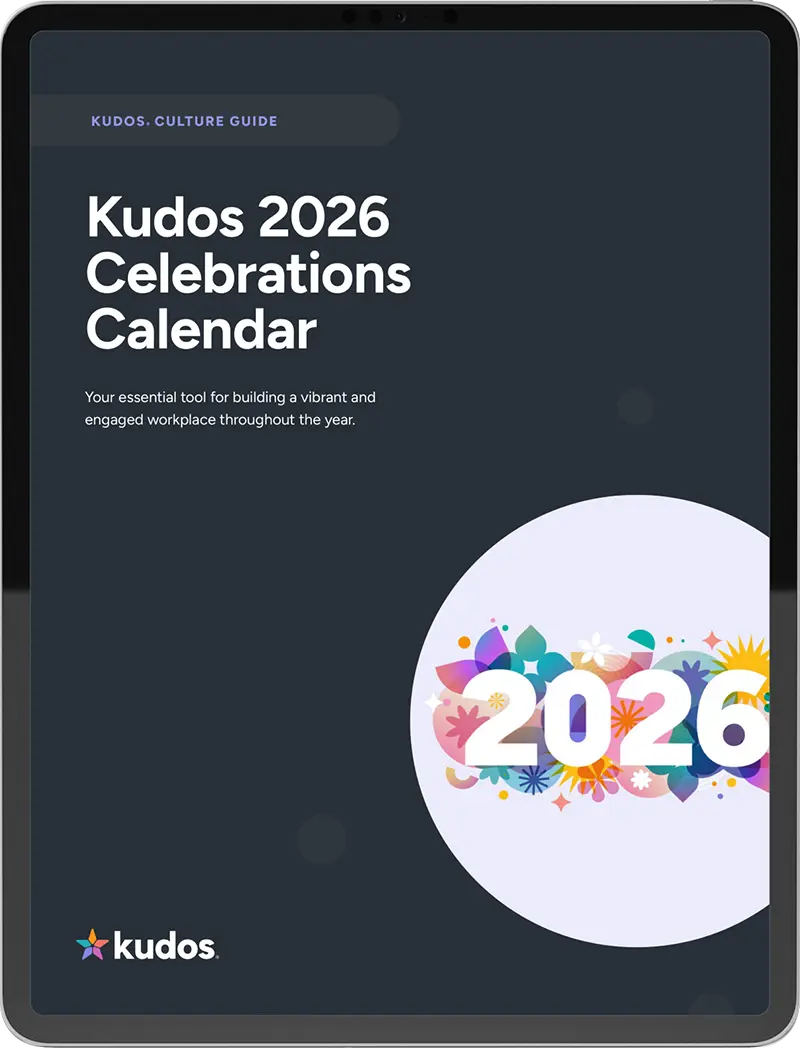How Effective is Your Onboarding Strategy?
Performance
August 23, 2022
Kudos
X min
Performance
August 23, 2022
Kudos
X min

Successfully onboarding a new hire is top of mind for most companies, and it’s easy to understand why - losing employees to poor onboarding can result in high employee turnover, damage to an organization’s reputation, and significant costs!
While welcoming new employees is part of the excitement of running a company, watching them walk out because they had little to no support during their first few months is far less exciting.
That’s why companies face staggering losses when employees jump ship. Surprisingly, 31% of employees leave a job within their first month, and the cost of that turnover can range between $3,000-$18,000 for one employee alone.
If that weren’t alarming enough, the cost of losing a company executive can be even greater - up to 213% of that exec’s annual salary.
When companies lose, on average, 25% of their employees within their first year of employment, it’s understandable that organizations would work arduously to ensure their teams want to stay.
So where, exactly, do companies go wrong?
It may just start with the onboarding process.
Would it surprise you to learn that 35% of companies report spending $0 on onboarding, while most spend less than 2 months onboarding a new hire?
Sadly, it’s true.
It’s often assumed that companies will have some sort of onboarding process in place and, further, that this process will include training for the role, assimilating into the work culture, and educating a new hire on the company, in addition to their tasks and the organizational values. But we may be jumping the gun making such assumptions; many companies are, in fact, without an effective onboarding strategy.
Top-level executives and HR managers agree. Globally, 32% of executives rate their company’s onboarding experience as quite poor or nonexistent.
Further, 76% of HR leaders feel their organization’s onboarding strategy is underutilized.
Meanwhile, only 12% of employees feel their organization does a good job with onboarding new hires, and only 21% are satisfied with the onboarding experience they’ve had.
Onboarding sounds like a simple task, so why aren’t more companies getting it right?
One answer could be that companies fail to look at onboarding as more than just paperwork and processes.
Take, for example, the standard onboarding procedure. Traditionally, onboarding has gone something like this…
Today, most companies still use similar onboarding structures but to their detriment. They focus on paperwork, handbooks, and days spent filling out forms as the totality of an onboarding procedure. According to HCI, 58% of companies report their onboarding process still revolves around outdated paperwork and procedures.
Yikes!
Organizations that succeed with onboarding new hires do so because they recognize that a poor onboarding strategy is as effective as having no onboarding strategy at all.
Well, yes!
If we think of onboarding as the first step in an employee’s journey with their company, then we have to consider how crucial of a role onboarding plays in employee retention.
A global study by McKinsey found that the number one challenge leaders face is retaining quality employees after hiring them.
What happens after getting hired? Onboarding!
More than ¼ of top-performing employees are considered high-retention-risk, meaning they’re more likely than other employees to leave their company. Onboarding could help mitigate this risk, as it ensures employees have the right foundation they need to thrive, from day one, onward.
That’s not to say organizations should stop supporting employees once they’ve onboarded them. It takes new hires an average of 8-12 months to gain proficiency in their role, and 69% of employees who have had a positive onboarding experience are more likely to remain with their company for three years or more.
It’s fair to say, then, that an employee’s onboarding journey lasts longer than the traditional 1-3 month period during which most new hires are expected to acclimate to their work environments.
Aside from increased employee retention and higher productivity, having an effective onboarding strategy in place has a myriad of benefits!
Studies have found that an effective onboarding strategy can result in up to 50% new hire retention and 54% higher productivity in new hires.
Take the cost of recruitment as an incentive to develop an effective onboarding approach. The average employer in the U.S., for instance, can spend up to $4,000 and 24 days to hire a new employee, which means higher productivity and increased retention of new employees truly pays off.
And that’s not all.
Other studies that look at the financial advantages of proactive onboarding have concluded that organizations with a structured onboarding process see a 60% year-over-year improvement in revenue.
When done effectively, onboarding can boost productivity and bolster a company’s reputation as a good place to work - something organizations should care about, given that poor onboarding means 1 in 5 employees are unlikely to recommend their company as an employer to others!
What can your company do today to improve its onboarding process?
One critical mistake HR leaders can make is to ignore the results of their organization’s onboarding process. Knowing how employees are performing and thriving, especially when new to a company, can provide valuable insight into company processes and future onboarding. More than 55% of companies don’t measure the effectiveness or results of their onboarding processes, creating a virtual ‘blindspot’ for HR and hindering accountability!
With Kudos, you can measure both employee and company performance while gaining insight into what your teams truly value with our deep analytics and KQ features. HR leaders love Kudos for its ability to show, in real time, how both existing and new hires are doing in their company. Make us a part of your onboarding strategy and request a demo today!

A newsletter with the best resources for HR professionals.


Your essential tool for building a vibrant and engaged workplace throughout the year.
Get Your Guide